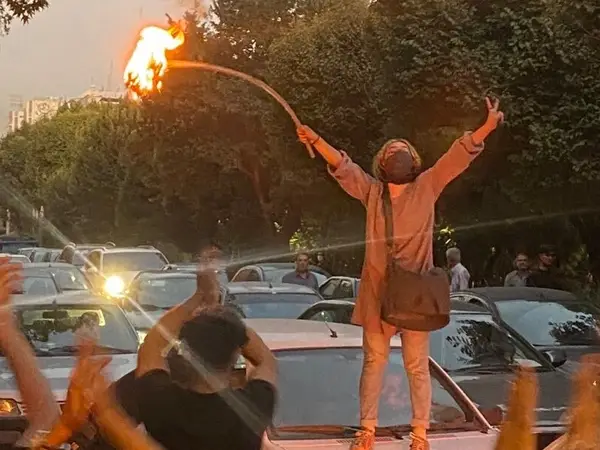Tens of thousands of Iranians who protested in the several cities against the Islamic Republic on Monday say they will return to the streets Tuesday evening.
In what appears to be the most widespread protests since 2019, thousands protested in the capital Tehran, northern city of Rasht, and the very religious city of Mashhad, Iran's second most populous city known as a bastion of Shiite hardliners.
In the protests fueled by the death in custody of the 22-year-old Mahsa (Zhina) Amiri, protesters have been emphasizing their personal freedoms including the right to decide what to wear. Unlike most protests in the past few years that were triggered by economic hardship, this round of demonstrations is propelled more by a yearning for social freedoms. Clearly, most protesters are rejecting the very essence of clerical rule and its top symbol, Supreme Leader Ali Khamenei.
Women have taken a markedly active role to show their opposition to the country’s laws which make flouting the hijab, or even not wearing it in a way acceptable to the hardliner authorities, punishable with prison and cash fines. The law is enforced by tens of thousands of the so-called ‘Guidance Patrols’, which are religious police acting with impunity.
Calls were made on social media Monday evening to continue the protests Tuesday evening across the country. Reports from Tehran Tuesday indicate that students in some universities such as Shahid Beheshti University, have already begun protesting on campuses. Tehran University, the largest in the country, which was the scene of a large protest rally Monday has taken a preemptive measure and informed students by text message that it has made all its classes online in the next three weeks for all apart from residents of the capital.
In Tehran the protests outside university campuses on Monday started from a street named Hijab. Activists had announced the gathering a day earlier and the protest spread to a boulevard nearby. Some women’s rights activists who had organized the call to protest on Hijab Street, including documentary filmmaker Mahnaz Mohammadi, were reportedly violently arrested by the security forces there but freed after a few hours.
In a move never observed at such a large scale before, hundreds or even thousands of protesting women removed their headscarves and waved them above their heads. Women removed their veils even in some small, traditional towns such as Saqqez, the young girl’s hometown. Some others, such as a protester in Tehran, burned their hijab on the street.
Protesters also chanted slogans against the Supreme Leader Ali Khamenei, who claims the anti-hijab movement is nothing but a Western plot to harm the regime, called him a dictator and said they did not want the Islamic Republic.
Khamenei and other officials often claim that Iranian women wear the hijab by choice but there are strict regulations enforced in government offices that define the ‘acceptable hijab’, from the size of headscarves and the length of female employees’ gowns and trousers to the type of shoes they are allowed to wear which exclude heels of any type as well as sandals.
Not only women who do not believe in hijab, but also many who wear it by choice are against compulsory hijab. In July many such women joined a social media campaign against the much-dreaded hijab enforcement patrols. They posted their own pictures with the hashtag “I wear the hijab but am against morality police patrols”.
In the past few months, authorities have even been policing the compulsory Islamic dress code on the tombstones of Tehran’s massive Behesht-e Zahra cemetery and removed about 100 gravestones which had pictures of deceased women without veils.
